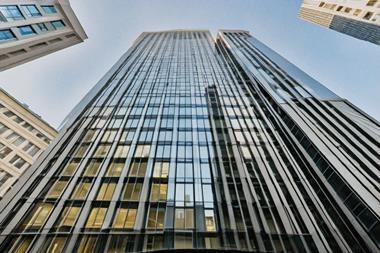Canadian insurer Manulife has big designs on the world of private markets and real assets. And it hopes that a reorganisation of its existing capabilities will result in something greater than the sum of their parts.
The company has long owned a number of discrete real assets businesses, some of which were derived from its takeover of US insurer John Hancock in 2003. Its capabilities in timber and agriculture, for instance, date back to 1985 and 1990, respectively, and today form Hancock Natural Resource Group.
The real estate arm, which is active in Canada, the US and Asia-Pacific, has long managed capital on behalf of Manulife’s general account, and over the past decade has expanded into third-party fund management. It has also built up a presence in infrastructure.
But now these different parts are all falling under the leadership of Christoph Schumacher, who, until earlier this month, had been global head of real estate at Credit Suisse Asset Management (CSAM) for the past four years. Schumacher takes on a new role for Manulife – global head of real assets – and oversees real estate, infrastructure, timber and agriculture.
These four asset classes sit alongside another ‘vertical’ made up of private equity and private credit managed by Vipon Ghai. These two verticals make up Manulife’s new streamlined private markets offering, all overseen by Steve Blewitt.
“What we’re doing with this position with Christoph is we’re bringing together our real estate, our timber, agriculture, infrastructure all under his leadership – so it’s bringing those asset classes together in a vertical under a single leader,” says Steve Blewitt, global head of private markets. “We will retain all the domain expertise within each of those asset classes, and they will stay fully formed in terms of their structures.”
The reorganisation of these private markets also comes shortly after Manulife unified its institutional, retail and retirement businesses, which until 2019 were also relatively disparate initiatives. Hancock Natural Resource Group has retained its separate identity, but the John Hancock Infrastructure and John Hancock Real Estate brands are now known simply as Manulife Investment Management.
Schumacher’s appointment is a notable one. He has experience in infrastructure and renewables, but he is well known as one of the leading figures in institutional real estate in Europe. Before running global real estate at CSAM from Zurich, he oversaw the institutional business at German fund manager Union Real Estate, and before that ran the international investments at the real estate arm of Italian insurer Generali.
Manulife’s real estate presence is exclusively in North America and Asia-Pacific, so it might be inferred that an important part of Schumacher’s role is to build up a European presence. Last week, Manulife also announced it had been granted Alternative Investment Fund Manager (AIFM) licence, enabling it to offers its private-markets products to institutional investors in the European Union.
Blewitt says Manulife is looking to expand its private markets business “in all geographies”, but readily admits that Europe is a key area. “We really don’t have much on the ground capabilities there right now,” he says.
Manulife is also a core and core-plus investor when it comes to real estate. A push into higher-risk strategies and or more specialised parts of the market could well be on the cards. “We may look to expand capabilities into value-add or opportunistic or maybe also sector-focused… it could be multifamily or student housing or logistics,” Blewitt says.
Having internal capital will help Manulife expand its real assets activities. “That helps us a lot,” says Blewitt. “Having the insurance company there to be an investor in funds with us, to seed new strategies for us, is very beneficial. The markets are very competitive – there is no question about that.”
Blewitt says it was around 10 years ago that the company “decided to more actively pursue managing private assets for external clients”, and today there is “an opportunity to fully commercialise [its] capabilities… that also benefits the general account, because we are able to retain exceptional talent to manage the assets on behalf of our general account as well as our external clients.”
To read the digital edition of the latest IPE Real Assets magazine click here.

















